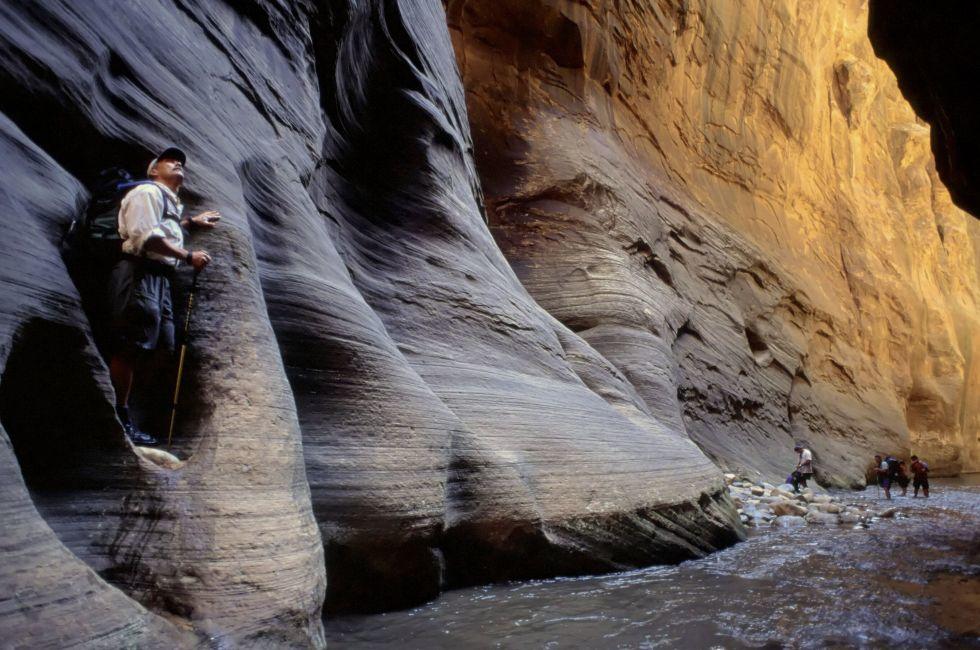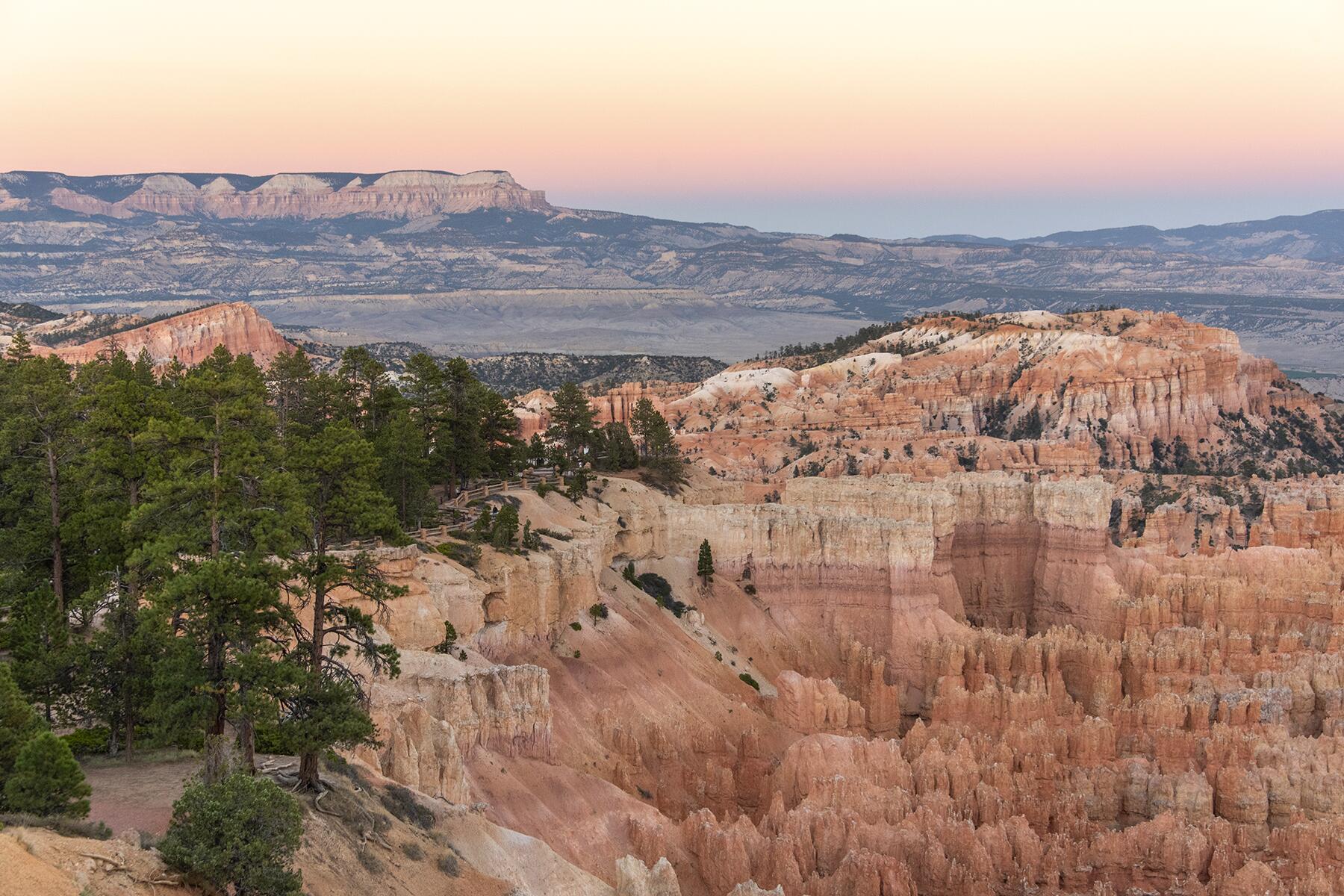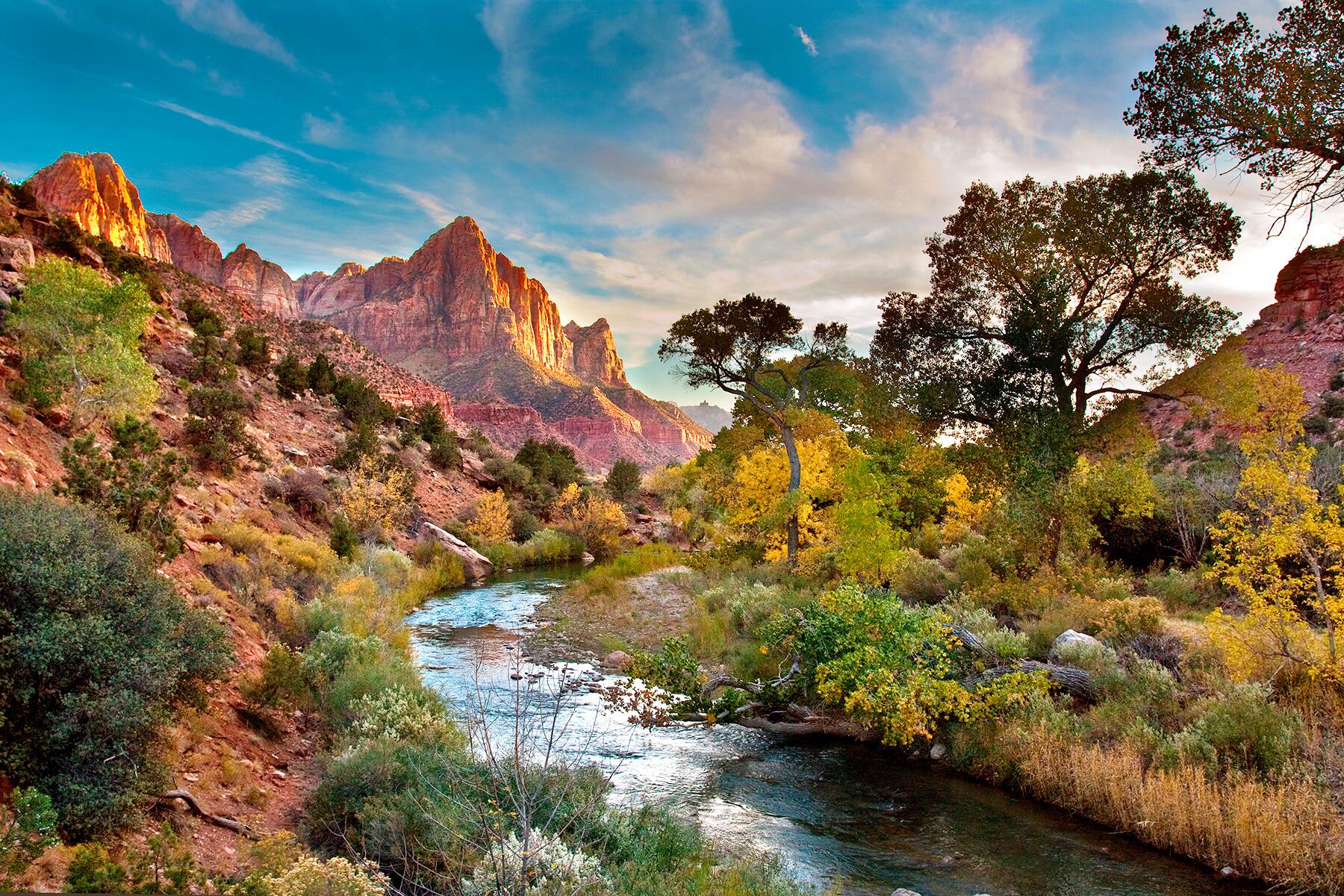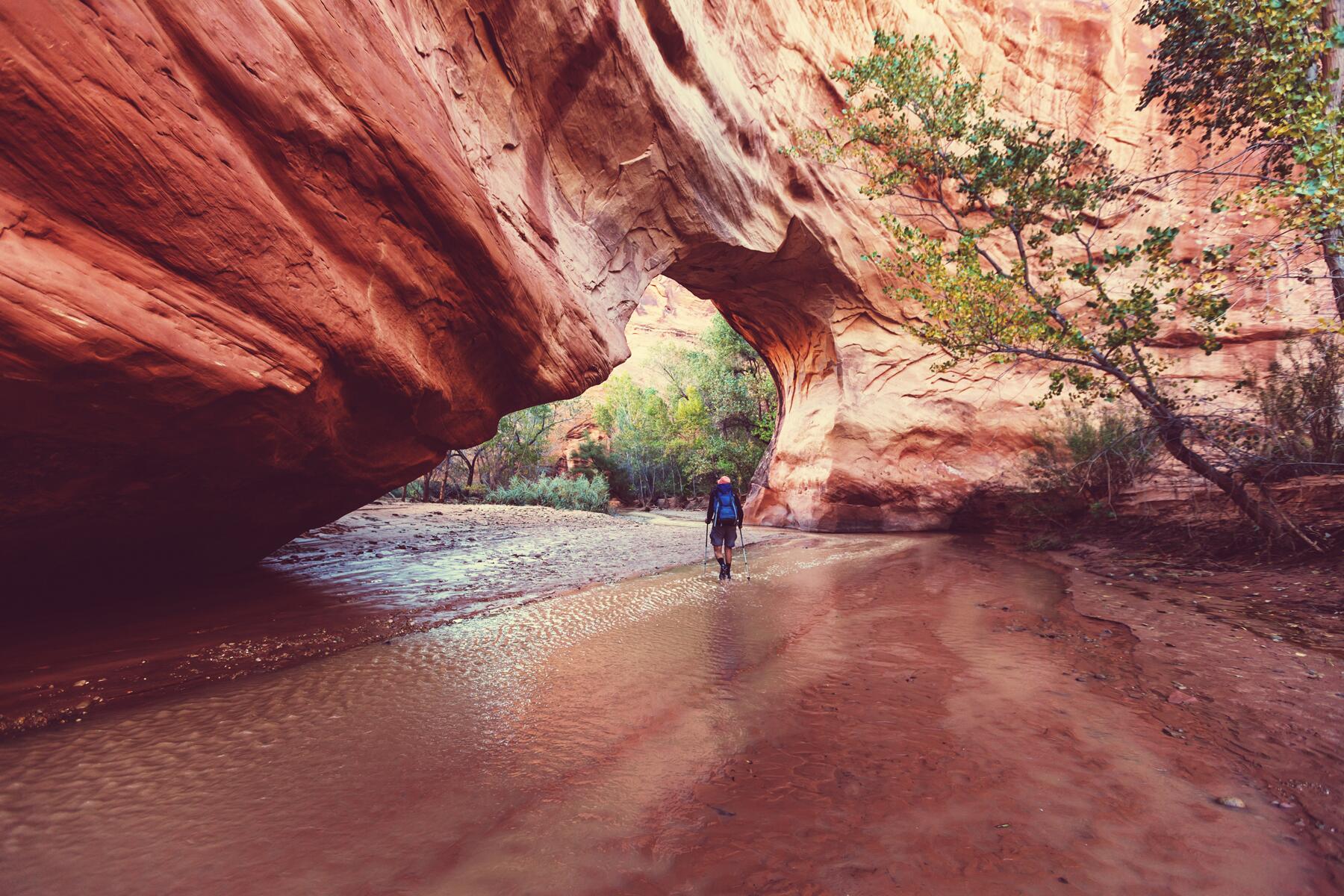Zion National Park
Zion National Park
The walls of Zion Canyon soar more than 2,000 feet above the valley. Bands of limestone, sandstone, and lava in the strata point to the distant past. Greenery high in the cliff walls indicate the presence of water seepage or a spring. Erosion has left behind a collection of domes, fins, and blocky massifs bearing the names of cathedrals and temples, prophets and angels.
Trails lead deep into side canyons and up narrow ledges to waterfalls, serene spring-fed pools, and shaded spots of solitude. So diverse is this place that 85% of Utah's flora and fauna species are found here. Some, like the tiny Zion snail, appear nowhere else in the world.
The Colorado River helped create the Grand Canyon, while the Virgin River—the Colorado's muddy progeny—carved Zion's features. Because o...
Read MoreThe walls of Zion Canyon soar more than 2,000 feet above the valley. Bands of limestone, sandstone, and lava in the strata point to the distant past. Greenery high in the cliff walls indicate the presence of water seepage or a spring. Erosion has left behind a collection of domes, fins, and blocky massifs bearing the names of cathedrals and temples, prophets and angels.
Trails lead deep into side canyons and up narrow ledges to waterfalls, serene spring-fed pools, and shaded spots of solitude. So diverse is this place that 85% of Utah's flora and fauna species are found here. Some, like the tiny Zion snail, appear nowhere else in the world.
The Colorado River helped create the Grand Canyon, while the Virgin River—the Colorado's muddy progeny—carved Zion's features. Because of the park's unique topography, distant storms and spring runoff can transform a tranquil slot canyon into a sluice, and flood damage does sometimes result in extended trail closures, as happened in summer 2018 to three trails near the Grotto and Zion Lodge sections of Zion Canyon.








